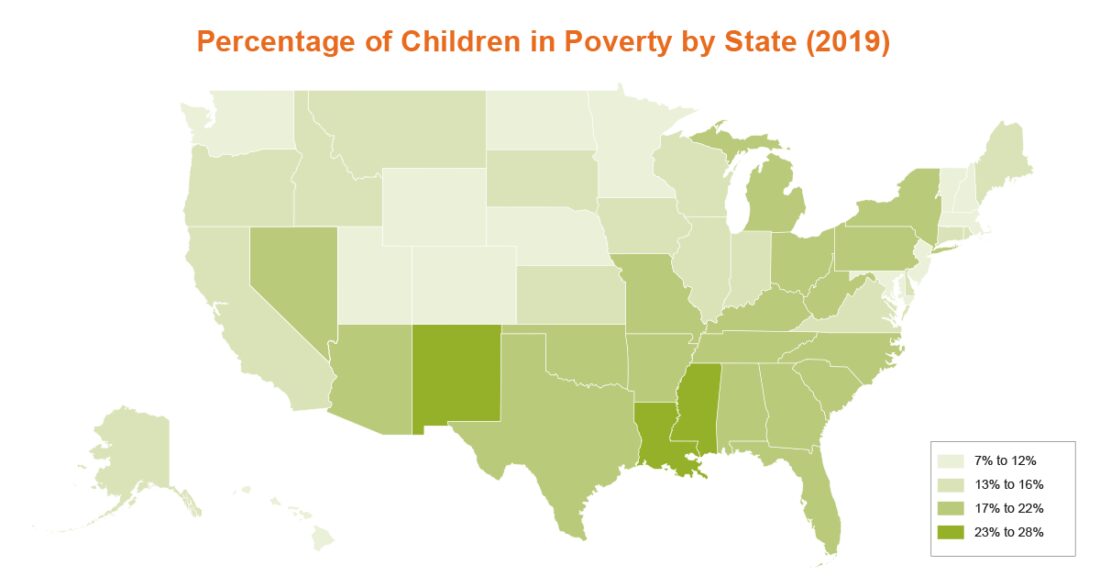Modest Progress on Child Poverty Preceded the COVID-19 Pandemic

In 2019, 12 million children in the United States — 17% of America’s children — were living in poverty. Both the number and the percentage were the lowest since 2001.
The medium-term trend in child poverty is unclear, and the latest numbers reflect conditions prior to the onset of the COVID-19 pandemic, whose effects on society have been wide-ranging. Here is a look at the conflicting trends:
- The share of kids in poverty fell each year between 2014 and 2017 but remained the same from 2017 to 2018 (18%), a stagnation that was cause for concern. Every child should live in economic security that provides them with the best chance to thrive.
- Nevertheless, the 2019 numbers were encouraging, and the percentage of children in poverty remains far lower in 2019 than in 2011 and 2012, immediately after the recession (23%).
- Racial and ethnic disparities remain significant: 31% of Black children, 30% of American Indian children, 23% of Hispanic or Latino kids and 17% of children of two or more races lived in poverty in 2019. (The shares of Asian and Pacific Islander children and white children, both 10%, were the lowest among racial or ethnic groups.)
- Although these disparities are persistent, the percentage of children in poverty fell at least one point in every racial or ethnic category from 2018 to 2019. The most significant reduction was seen for Hispanic or Latino children (from 26% to 23%).
What about state rates? Here, again, the data are encouraging. Child poverty either fell or stayed the same in every state but one: Louisiana, where it rose one percentage point to 27% in 2019. It fell in the District of Columbia and was the same from 2018 to 2019 in Puerto Rico, whose child poverty rate of 57% was more than twice the highest state rate (Mississippi, 28%).
In 2019, living in poverty meant that a family of two adults and two children had an income of less than $25,926. The KIDS COUNT Data Center also is home to newly released data on child poverty by age and by race and ethnicity and age. There are also figures on children living under 200% of the federal poverty level. Half or more of all children are growing up in families with incomes below that key level in Mississippi (52%) and New Mexico (51%), as well as in Puerto Rico, where four out of every five children live below 200% of the federal poverty level.






